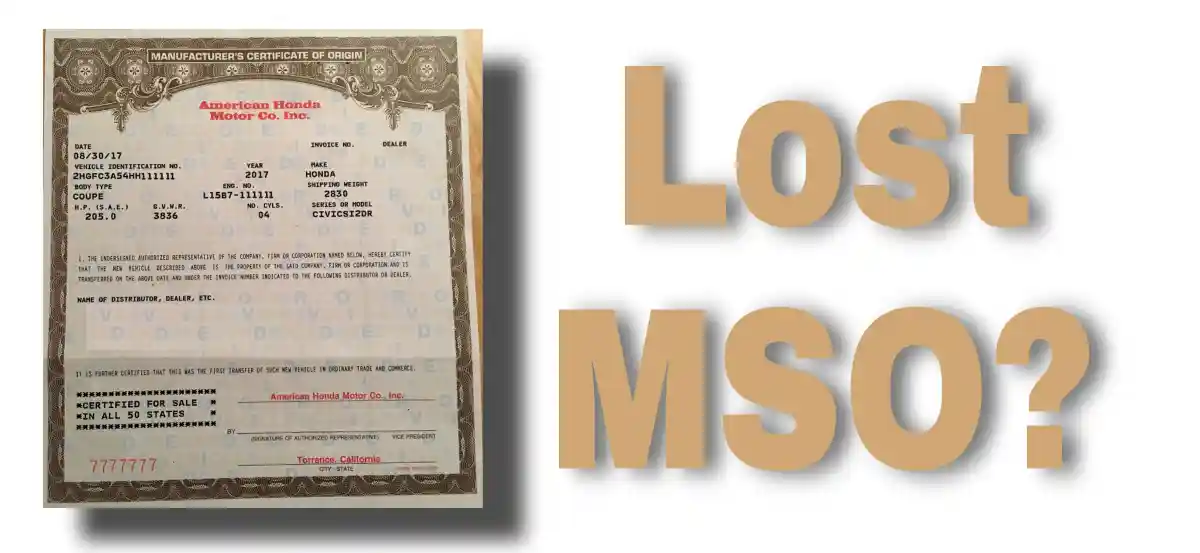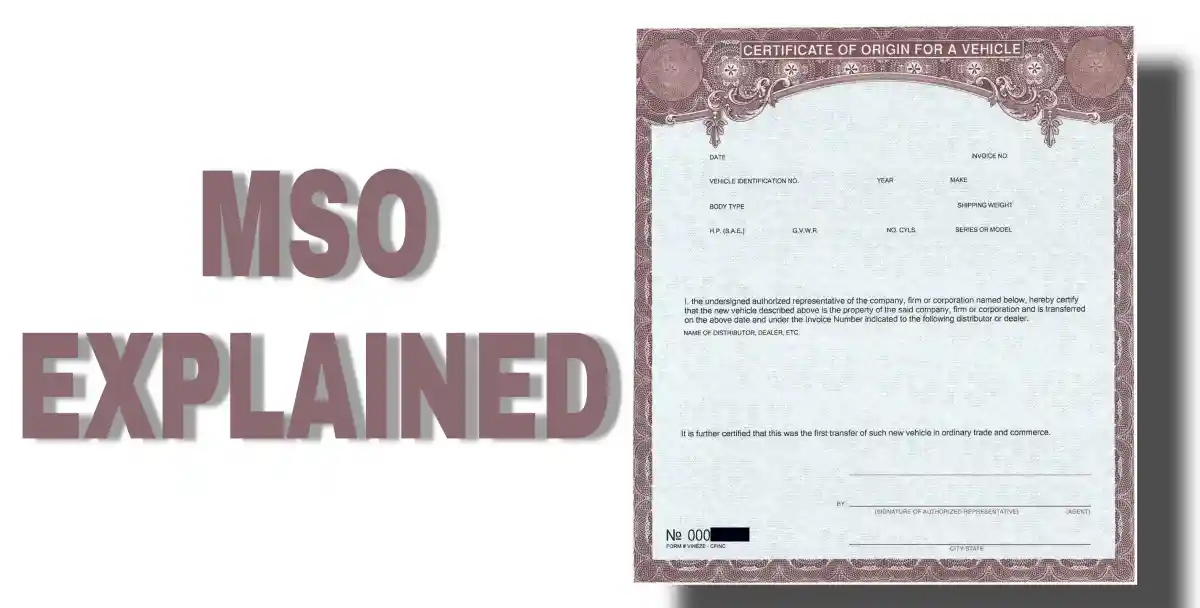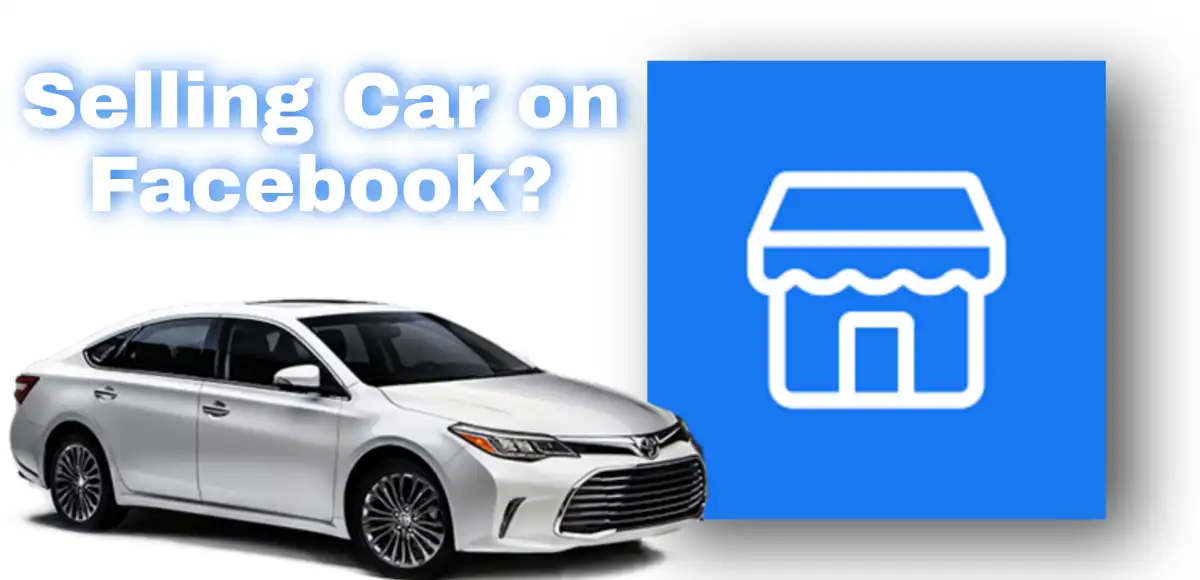If you lost Certificate of Origin for a vehicle, that can be a problem, but not really since you can request a replacement. However, this time, you won’t be requesting that replacement from your Department of Motor Vehicles but rather from the manufacturer of the car.
The application process is typically the traditional “apply, show proof of vehicle ownership, pay a fee, and wait. You can even perform the application for a duplicate via the manufacturer’s website.
Anyways, this article has a lot in store for you, including why you really need that Certificate of Origin (COO) back.
What is a Certificate of Origin for a Vehicle?

A Certificate of Origin for a vehicle is often known as the Manufacturer’s Statement of Origin (MSO), an important document that provides evidence that a vehicle was produced by a certain manufacturer. Ordinarily, this is the birth certificate of a car, which details where and when it was produced, as well as other identifying information.
DMVs (Department of Motor Vehicles) typically require this document initially for vehicle registration and ownership transfer. Issued by the manufacturer of the specific vehicle, the COO guarantees that the vehicle has been manufactured and is originating from the location indicated on the certificate.
You will need this information when dealing with international trade, tariffs, and quotas since it is the certification authenticating the origin of your car. It can even affect the duties or restrictions applied to the vehicle. For instance, some countries may have lower duties for vehicles manufactured within a particular region or trading bloc.
COO information typically includes details about the vehicle such as:
- Vehicle Identification Number (VIN)
- Make
- Model
- Year of manufacture, and
- Place of production
The VIN is important since it provides a unique identity to each vehicle, and enables tracking of the vehicle as long as it exists. VIN is typically a 17-character (digits and capital letters) identifier of a vehicle containing information about the vehicle’s specific manufacturer, brand, and engine size, and even where it was built. With this code, the vehicle history can be tracked during sales, registrations, warranties, thefts, and recalls.
What to Do if You Lost Certificate of Origin for a Vehicle?
If you just lost Certificate of Origin for a vehicle, it is a bit of a problem but is fixable. States typically make it easier to get a replacement COO as long as you can show that you own the vehicle in question. Follow these general steps to get a replacement Certificate of Origin:
1. Get in touch with the manufacturer
The COO, as explained, is typically issued by the manufacturer. Therefore, the manufacturer should have a record of your vehicle in their database. Just make sure that you have your VIN in place, as this will be required to locate the necessary information.
2. Fill out a replacement application
The manufacturer will require you to fill out an application for a duplicate COO. This application will usually need to include the VIN, make, model, and year of the vehicle. Ensure that the information provided is accurate and complete. It should also provide a field where you enter your contact information so the manufacturer reaches out to you when necessary.
3. Show your proof of the vehicle purchase
In addition to filling out an application, you may be required to provide proof of purchase for the vehicle. Typically, you submit a sales receipt or a bill of sale. That’s because the manufacturer needs to verify that you are the legitimate owner of the vehicle before they can issue a new COO. Some manufacturers may also require proof of identity, including a copy of your driver’s license, passport, or any other valid form of identification.
4. Pay the fee
In some cases, there may be a fee associated with obtaining a duplicate COO if you lost certificate of origin for a vehicle. The cost can vary depending on the manufacturer and the specific circumstances, so be prepared to pay this fee as part of the process.
Once you complete the fee payment, give it some time for processing. The time this takes can vary, so it’s best to get started as soon as possible after discovering the loss of your COO.
5. Receive the duplicate Certificate of Origin for a Vehicle
If the manufacturer approves your application, they will issue a duplicate COO which serves the same purpose as the original (verifying the origin and manufacturing details of your vehicle). In some cases, if you’ve already transferred the COO to a Title – a legal document signifying ownership – with your local Department of Motor Vehicles or equivalent agency, you might not need a duplicate COO.
That’s because the title can usually serve as sufficient proof of ownership and contains many of the same details as the COO. However, this may not be the case in all jurisdictions or for all types of transactions, so it’s best to check with your local authorities or a legal advisor.
How Do I Get the MCO for My Car?
Tabulated below are the steps to get the MCO for your car:
| S/N | ||
|---|---|---|
| 1 | New Vehicles | When you buy a new vehicle, the dealer should provide MCO for your car. If not already provided, you have to request it from the dealer. |
| 2 | Used Vehicles | For used vehicles, it can be a bit complex since it is typically used to create the vehicle’s title once the vehicle is registered for the first time. When buying a used car, you will receive a title, not an MCO for the car. |
| 3 | Contact the Manufacturer | If you lost your MCO (as detailed in this article) or it was never received, contact the manufacturer of your car. Depending on your car’s manufacturer’s policies, they may issue a new MCO. |
| 4 | Application for a New MCO | A manufacturer may require filling out an application to issue a new MCO, which requires vehicle details like the VIN, make, model, year, and proof of ID (such as driver’s license) and purchase. |
| 5 | Pay the Fee | Often, there’s a fee associated with obtaining a duplicate MCO. This fee varies depending on the manufacturer’s policies and is an essential part of the process of acquiring a new MCO. |
| 6 | Processing Time | After submissions, give the manufacturer some time to process your application. The duration varies by manufacturer but it should be communicated to you by your manufacturer. |
This is just a general guide we follow in this industry when applying for MCO. therefore, different manufacturers have different procedures and requirements for issuing a new MCO. But the situation is the same for most (if not all) manufacturers.
Is Title the Same as Certificate of Origin?
A vehicle title and a certificate of origin are two different certificates. While the vehicle Title shows the ownership of a vehicle, the COO shows the origin of the vehicle (as the name implies). Moreover, a title is issued by the DMV or equivalent agency in the jurisdiction where the vehicle is registered while COO is issued by the vehicle manufacturer.
When a vehicle is sold to a dealership, the COO is handed over as part of the transaction. When the vehicle is sold to the first retail customer, the COO is used to apply for a title with the Department of Motor Vehicles or an equivalent agency in the customer’s home jurisdiction. The title is then used to track the vehicle’s ownership.
A COO is not meant to prove ownership of the vehicle. Its primary purpose is to serve as a verification f0r the vehicle’s origin, so it does not contain any information about the vehicle’s ownership history.
![6 Proven Ways to Prove Someone Keyed Your Car [Guide] 6 Proven Ways to Prove Someone Keyed Your Car [Guide]](https://sanedriver.org/wp-content/uploads/2022/03/PicsArt_03-12-03.42.47.jpg)

